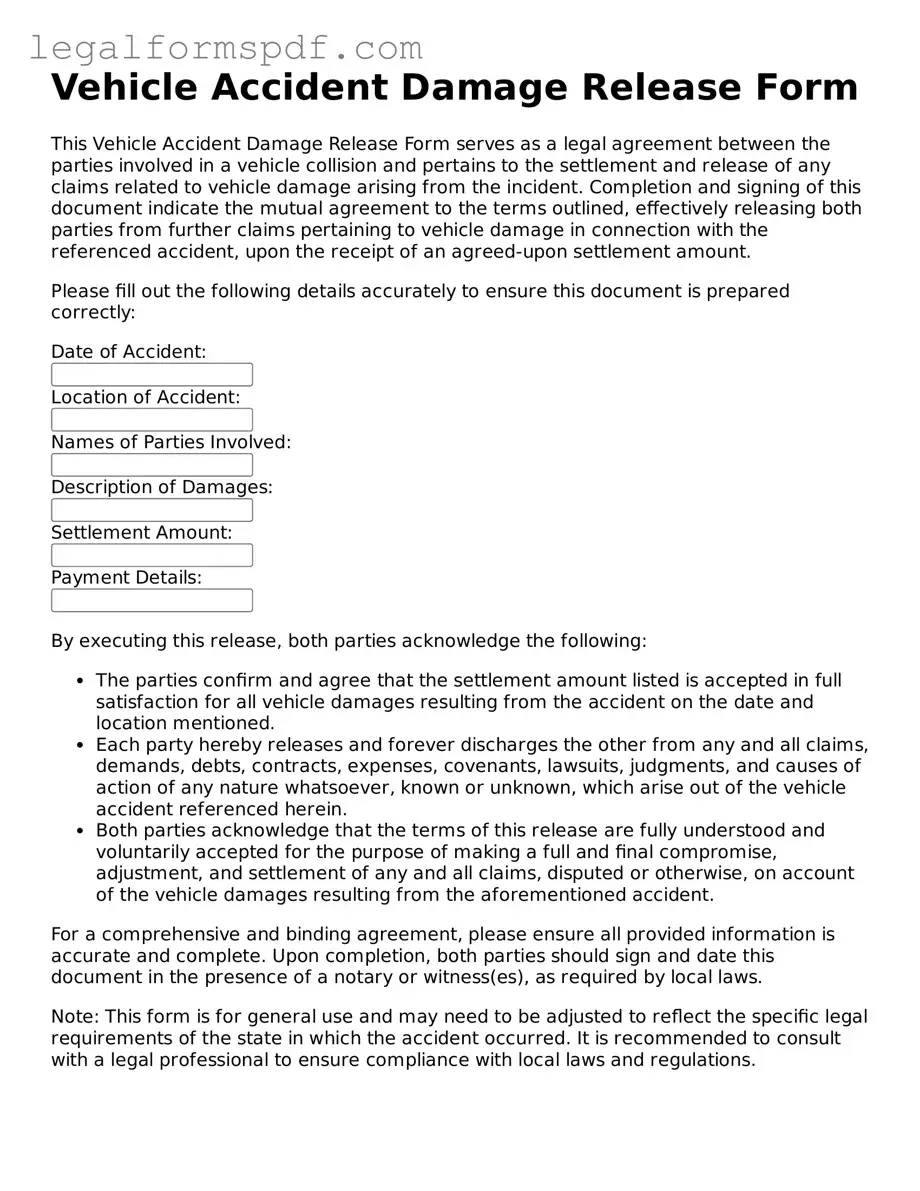The Liability Waiver Form is closely related to the Vehicle Accident Damage Release form, as both serve the purpose of absolving a party of legal responsibility in certain situations. While the Vehicle Accident Damage Release specifically addresses damages resulting from a car accident, the Liability Waiver Form broadens this concept by covering a range of activities or scenarios where an individual or entity wishes to be exempt from liability claims. This includes, but is not limited to, events, services, and physical activities where there is a risk of injury or loss.
The Property Damage Release form shares similarities with the Vehicle Accident Damage Release form in that both aim to settle claims related to damages. However, the Property Damage Release form is used when the damages extend beyond vehicles, encompassing any form of property such as homes, personal belongings, and other assets. This form is crucial in situations where an agreement is reached to compensate for losses or damages inflicted on one's property, thereby preventing future legal actions on the same issue.
Similar to the Vehicle Accident Damage Release form, the Personal Injury Release form plays a pivotal role in the aftermath of an incident, focusing particularly on injuries sustained by individuals. This form is often utilized to finalize settlements in cases where an individual has suffered injuries and agrees to accept compensation to forego any legal claims against the party responsible for their injuries. It ensures that the person receiving compensation cannot pursue further legal action related to the incident in question.
The Settlement Agreement form is akin to the Vehicle Accident Damage Release form in its function to legally document the resolution of a dispute between parties, often involving financial compensation without admitting fault. This broader document can apply to various situations, including but not limited to vehicle accidents. The Settlement Agreement seals the agreement between involved parties, outlining the terms under which they have agreed to resolve their differences and preventing future claims on the matter.
Another document related to the Vehicle Accident Damage Release form is the Mutual Release Agreement. This agreement is reciprocal, meaning that it involves both parties releasing each other from any further claims, liabilities, or legal actions connected to a specific event or transaction. It’s particularly useful in scenarios where both parties might have claims against each other, and they agree to settle all of these claims to avoid litigation. Similar to vehicle accident circumstances, it offers a clean slate for all involved.
The General Release form bears a close resemblance to the Vehicle Accident Damage Release form but is applicable in a wider range of situations. This form is designed to discharge all possible claims, whether known or unknown at the time of the agreement, against another party. Often used in settling disputes outside the courtroom, the General Release can apply to employment disputes, contract disputes, and more, providing a comprehensive shield against future legal actions related to the incidents covered under its terms.
The No-Fault Agreement is among the documents related to the Vehicle Accident Damage Release form, particularly catering to vehicle accidents where the parties decide not to pursue fault-based claims. By signing this document, parties agree to handle their damages independently, typically through their insurance carriers, without asserting blame. This agreement is crucial in expediting the settlement processes and avoiding the complexities of legal disputes over liability and fault in accidents.
